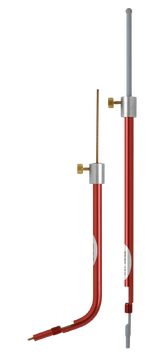This statement right here has a lot of application to all sorts of areas in life.I'm not a big fan of those(moving parts mean more things that can break or go wrong)
A couple of things I'll add to my earlier post re. cartridge case headspace gauges.
1. Using them isn't a once and done thing. Dies get out of adjustment, presses develop wear albeit in small amounts. I've had cases "go long" on me often enough that I use the gauges fairly often to check finished product. I also use them frequently for case length check. Because I don't like to go to the trouble of running a case through a trimmer that doesn't need it.
2. The reason I prefer the Wilson gauges, they top out at the mouth of the case. The Hornady gauge is longer on the mouth end and kind of hides the mouth of the case. I guess their idea is go / no go, but doesn't give you a clear look at how uniform cases may be from one to the next in a batch. Yes, the Hornady shows a case or cartridge out of spec, but in a different way. Unless I've missed something.
I failed to mention Lyman gauges earlier. I've only had one of those but it was like the Wilson gauges.
This is my method with single shots.You can do a drop test in a barrel in a pinch if you don't have a case gauge















